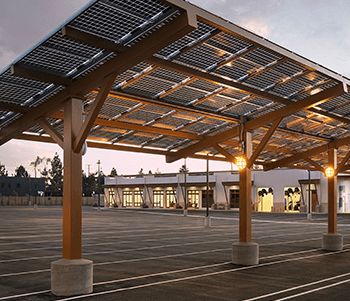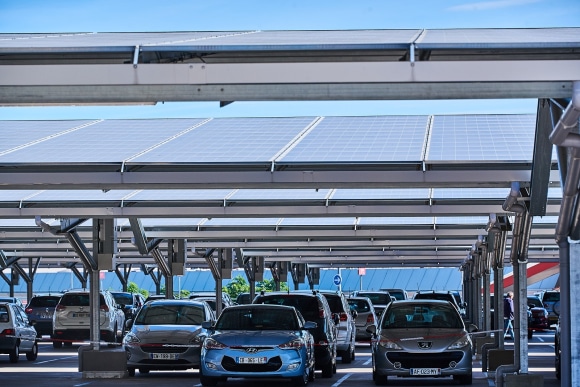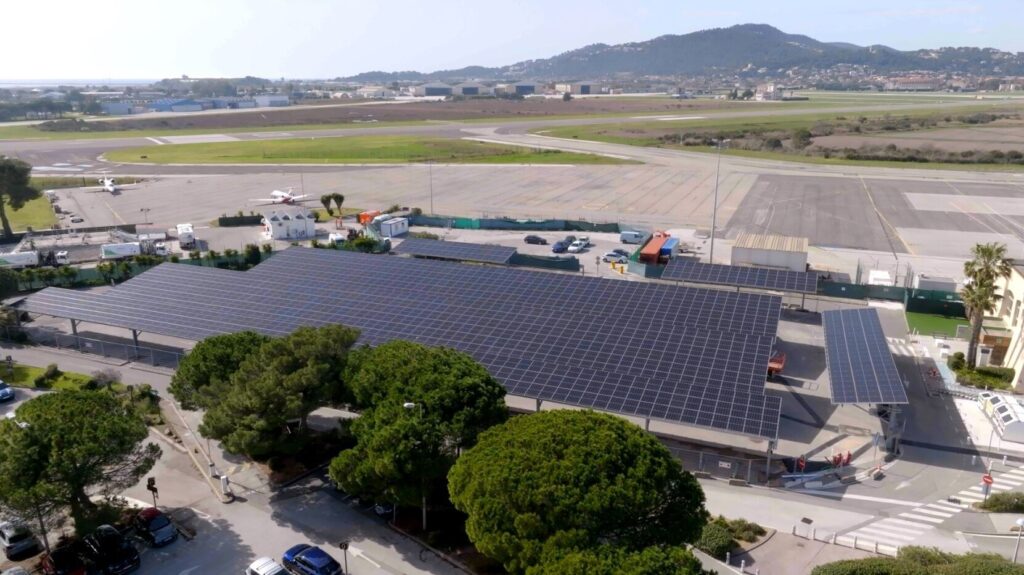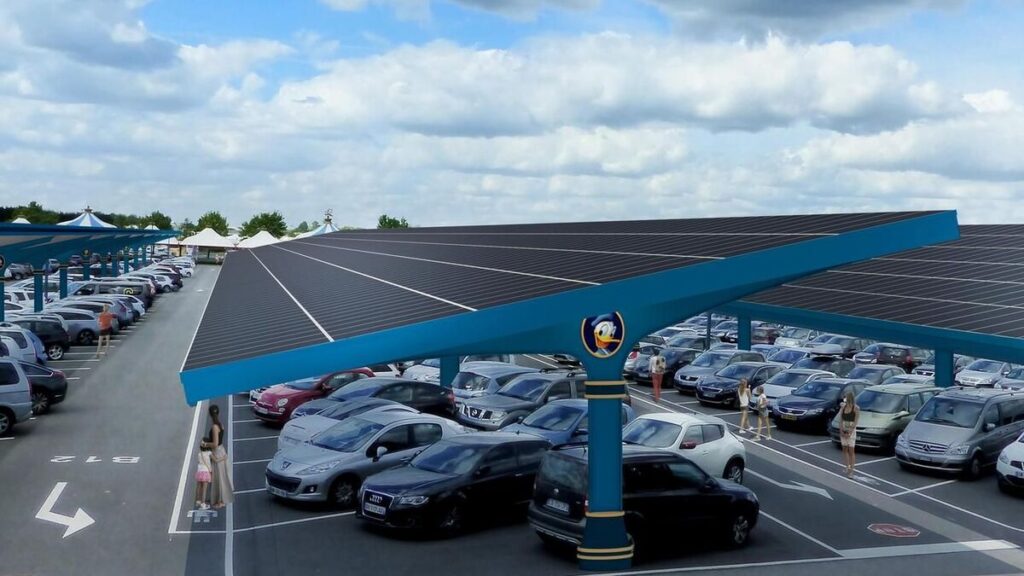1) What is a photovoltaic shade?
A photovoltaic shade is a structure dedicated to the production of solar energy. It is usually installed in parking lots or similar outdoor areas and consists of solar panels mounted on an elevated framework. It protects vehicles parked underneath from the elements and direct sunlight, while capturing solar energy to generate electricity.

2) Umbrellas and the Climate and Resilience Act
The law encourages the development of photovoltaic shading as part of the energy transition and the promotion of renewable energies. Since the 2021 Climate and Resilience Act, new parking lots and those undergoing major renovations must cover at least 50% of their surface area with photovoltaic shades or equivalent devices.
This measure aims to maximize the use of available surfaces to produce clean energy, reduce the carbon footprint of urban infrastructures, and encourage self-consumption of energy.
3) How does a shade house work, and how much energy does it produce?
A. How does a shade house work?
A photovoltaic shade captures the sun’s energy using solar panels installed on its raised structure. These panels convert sunlight into electricity by generating a direct current. An inverter then directly transform this direct current into an alternating one, making the electricity usable to power local infrastructures or to be fed into the power grid. An energy management system optimizes the use of the electricity generated, enabling self-consumption or resale of the surplus.
B. What is the power of a shade?
The power of a solar panel refers to the amount of electrical energy it can produce under standardized conditions. In general, a standard solar panel has an output of 300 to 400 Wp (peak watts), which represents the maximum power it can generate under optimal conditions, such as direct exposure to the sun at a specific temperature and irradiance.
C. What is the electrical efficiency of a shade?
The electrical efficiency of a photovoltaic panel refers to the efficiency with which it converts solar energy into electricity. On average, solar panels have an efficiency of 13% to 24%. This means that they convert this proportion of the solar energy received into electricity.
Using the example of a 100-space parking lot with a 200 kWp system and an average efficiency of 17%, the system produces around 297,840 kWh of electricity per year.
D) What is the investment cost for photovoltaic shading systems?
The average cost is between €1,200 and €1,800 per kWp installed.
For a 200 kWp installation, this represents an initial investment of €240,000 to €360,000. Savings on electricity bills and income from the resale of electricity help pay for this investment over a period of 10 to 15 years.
5) What types of players are investing in shading systems?
A) Shade systems for shopping centers
Shopping centers are increasingly adopting solar shading as an innovative and sustainable solution for their parking lots. One striking example isAuchan Béziers, which recently installed solar panels on its parking lots.

B) Shade systems for company parking lots
Company parking lots are also moving towards solar shading as a modern, environmentally-friendly solution. A case in point is Stellantis in Sochaux, where the company recently deployed photovoltaic shading systems on its parking lots.

C) Airport shading systems
Airports are increasingly adopting solar shading as an effective solution for combining protection and environmental sustainability. Photovoltaic shading systems have recently been installed on certain parking lots at Toulon-Hyères airport.

D) Shade systems for university campuses
University campuses are also positioning themselves in favor of solar shading as a smart, environmentally-friendly solution. University of California at Irvine (UCI) in California is an example where campus parking lots integrated photovoltaic shading systems.

E) Shades for amusement parks
More and more theme parks are turning to solar shading. It’s also good for energy efficiency. Disneyland Paris has also integrated photovoltaic shading systems into some of its parking lots.

6) Intelligent shading systems
Today, smart shading systems represent a significant step forward in the integration of smart city. In this context, complementary solutions can be juxtaposed on shading systems. Such is the case with Cocoparks’ technology.
Cocoparks has developed a solution made in France that is 20 to 50 times more efficient than traditional systems for smart parking in cities, airports, university campuses and shopping centers.


